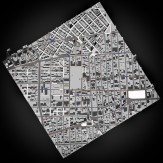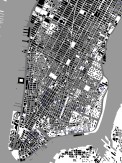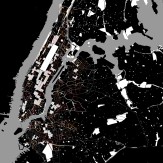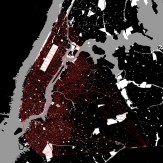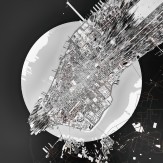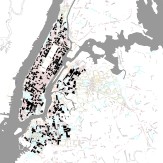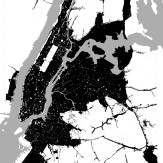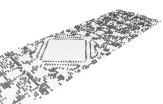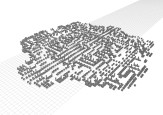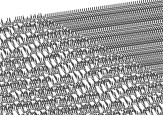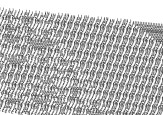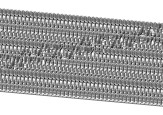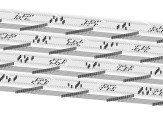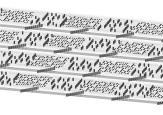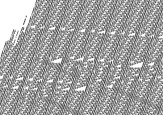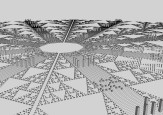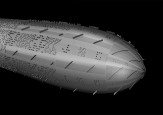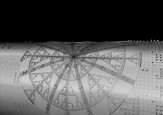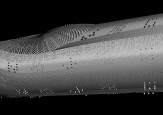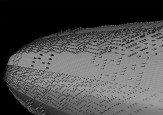Master of Architecture II Fall 2017

GRADUATE RESEARCH DESIGN STUDIO I
Associate Professor Adjunct Pablo Lorenzo-Eiroa
The Urbanism of Information: The Post-Digital as an Expansion of Design Authorship
What determines the design of a city? Why should we address the development of our cities as space-environments? What are the technologies available to represent environments? How can we understand the influence of computer codes, the internet, and media in architecture and city design and planning? How can we de-code an architecture of information? What is the emerging Urbanism of Information?
Computation has become now a new cognitive plateau across any subject of study, making computer science relevant across all disciplines. New technologies enable new lenses to see reality, which as a consequence, inform it. An architecture of information implies that it may be more relevant today to address architecture through the development of new informational systems. Instead of understanding architecture as the design of objects, buildings, spaces, environments, and urban spaces, an architecture of information implies informing reality in real time through computation, displacing structures to activate cultural agendas.
We have been witnessing new forms of urbanism, or at least new means that inform urban conditions, from how we experience cities to how we relate to each other in cities, comparable with the main revolutionary shifts in history that transformed the way our cities were planned and designed. Urbanism is now undergoing a transformation in the series of layers that transformed the built environment through history. This ongoing transitory urban transformation is based on surveying reality and understanding the potentialities in emerging systems that can be informed. The following phase is making the form of information systems, the form of the algorithms that inform the city, their signal distribution and information organization, an issue in itself. The city is tending to become an idealized machinic optimized plateau that is constantly informed and shifting, providing a new kind of idealized reality in which the form of the system and its optimization becomes the new implied idealized version of our built environment. This ideal information-based plateau is becoming in itself a destination in the form of the new city-environment. This ideal form can also be displaced, critiqued, and re-represented, activating cultural agendas in an urbanism of information.
The studio designed a critical ideal city. An ideal city thought from a determinate interface or software or computer language that critiques its own constitution and medium. The class was based on the issues raised in the book Architecture in Formation (Lorenzo-Eiroa, Pablo and Sprecher, Aaron Ed., Routledge, London, 2013).
< Back to Selected Graduate Design Studio Projects
VIEW INDIVIDUAL PROJECTS BELOW
Projects
-

Decentralized New York City—The Riddle of Uber
-

Emergent City—On the Brink of Reorganization
Back
Decentralized New York City—The Riddle of Uber
Fengqi Li
Recent technological innovations enable architecture to be dynamically responsive to multi-dimensional information and emerging conditions. Rather than providing an optimized solution, the framework of this research is to generate disciplinary knowledge that provokes the syntactic and semiotic understanding informing a new morphological form of a city. The algorithm-based system proposed in this project provides multiplicative solutions for analyzing both limitation and alternative in optimizing and designing a city. In this sense, the goal of this research is to develop epistemological commitments updating relationships among the information system, the user, and the environment.
Emergent City—On the Brink of Reorganization
Shang Wei Lin
Over the historical evolution of proposed ideal cities, there exists issues of
cluster organization, centrality, axial distribution, and environment boundaries.
How data informs the configuration of a city, and how it touches the limits of a
representation system, remains a question. This project aims to push the form
of the city beyond the boundary of a computational system – the Cellular Automaton.
The relation of the field to its components is problematized by generations of
change. By parameterizing the factors for this change, and introducing
multiple differentials generating formal bifurcations, this project activates the
architectural problem of the environment. If the linearity and centrality of an
ideal city is displaced through this non-recursive process, new typologies of
organization emerge.






